One of the most exciting tactical points we’ve seen in the 2022 World Cup is how the teams defending in deep blocks (e.g. Morocco & Japan) were superior against positional attacking teams (e.g. Spain & Germany), who found a lot of trouble attacking these units when the opposition players defended deeply which is also exactly what happened to Manchester City against Dortmund in the Champions League recently when Edin Terzić faced Pep Guardiola.
Pace, positional attacks, high-pressing, third-man runs, and diagonality are principles that each modern team seem to implement in an attempt to dominate and beat any deep block. The concept of the third-man combination consists of attracting the opposing players in order to to find free players isolated from the ball.
This tactical analysis represents a series of tactics that can be used to hurt the 4-5-1 defensive teams, forcing them into lose-lose situations and pushing them closer and closer to submission. This tactical theory piece will be an analysis of different methods teams can use to break down a 4-5-1 defensive block.
Distribution for confusion
As opposed to letting players freely roam across the whole pitch to overload the ball side while leaving the other side with no players, the prominent idea is to have them occupy offensive zones in order to move within these defined areas for switching or more well-structured counter-pressing.
The players should look to position themselves between the opponent’s block in both horizontal and vertical lanes, as well as both inside and outside the block. Furthermore, the players should never set themselves too closely thus one opponent will find it easy to defend the distance between two players if it‘s little, creating an inefficient attack.
The prime idea is to progress through or around or above the opponent’s block to reach the box. Therefore, passing options should always be available for the ball carrier. Passes into depth are always the top pick, also passing options to each side, and of course, the potential option for a back pass to safety and re-circulate. The players should have proficiency on the ball regarding passing accuracy, receiving, dribbling, and also how to get out of the opponent’s cover shadow to open a pass and move to pin the defenders. In general, players active on and outside of the ball will be essential.
Build with the least amount of players as possible but as many as needed. Another familiar idea is to have one extra player in the backline than the opponent strikers, creating a triangle with two centre-backs and a midfielder to outplay one striker or creating a numerical advantage to outplay two strikers. That secures clean ball progression.
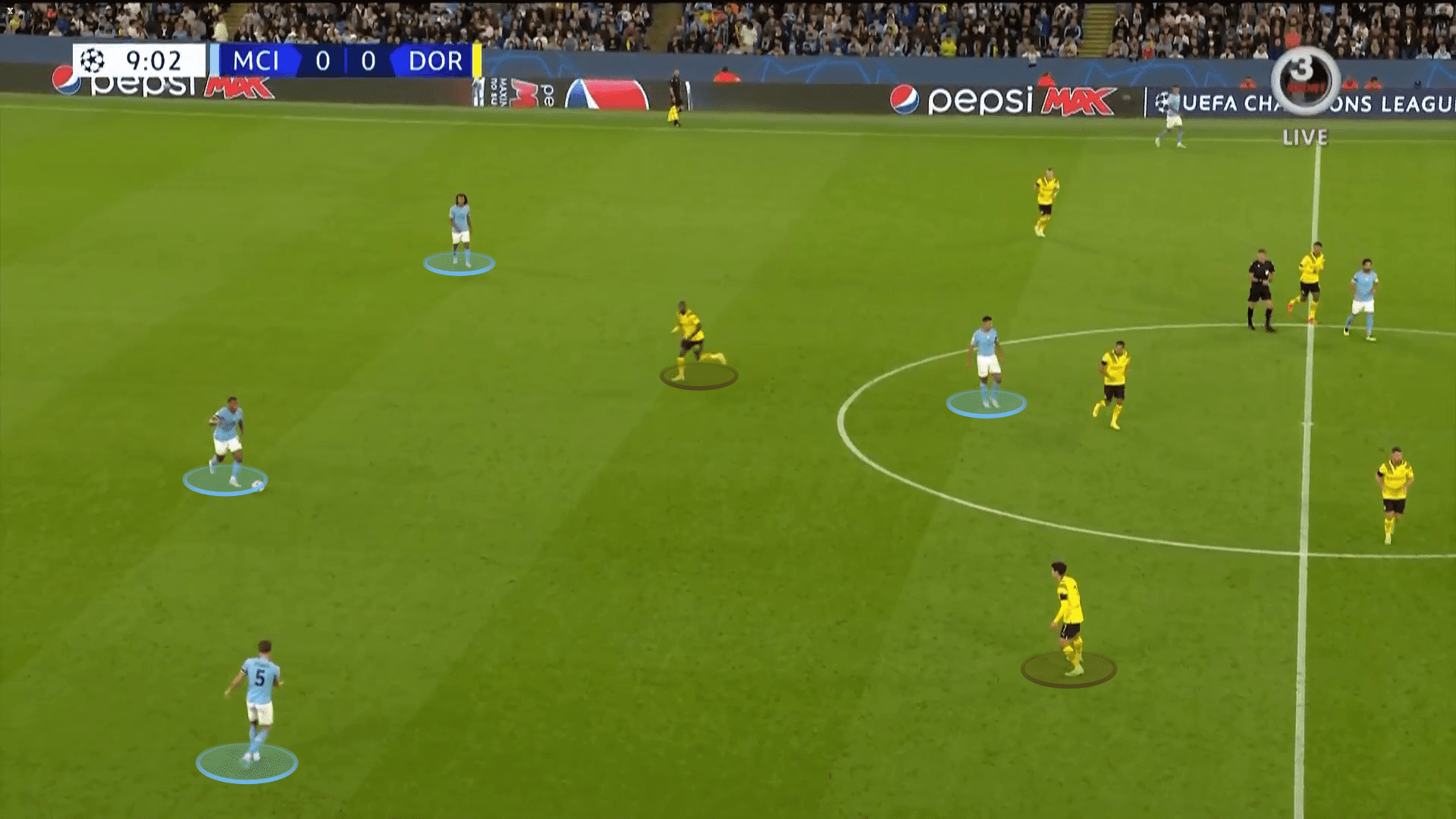
Also having two players in the wing means some absence central so one player is adequate. Likewise, use fewer amount of players to pin the opponent’s backline (e.g. two out wide wingers pin the fullbacks while the opponent’s centre-backs are busy with the striker. the opponent’s back four is pinned by simply three players).
Another advanced execution happens when the striker dropping-off to combine and overload centrally then two wide wingers move to the interior corridors (Distance between FB and CB) allowing to overload the midfield without defenders following (the opponent’s back four is pinned by two players only). Also, two #8s may move forward in these interior corridors pinning the backline meanwhile dropping off the striker and inverting the fullbacks can compensate for some of their absence. This ideology should be utilised in other spaces on the pitch too.
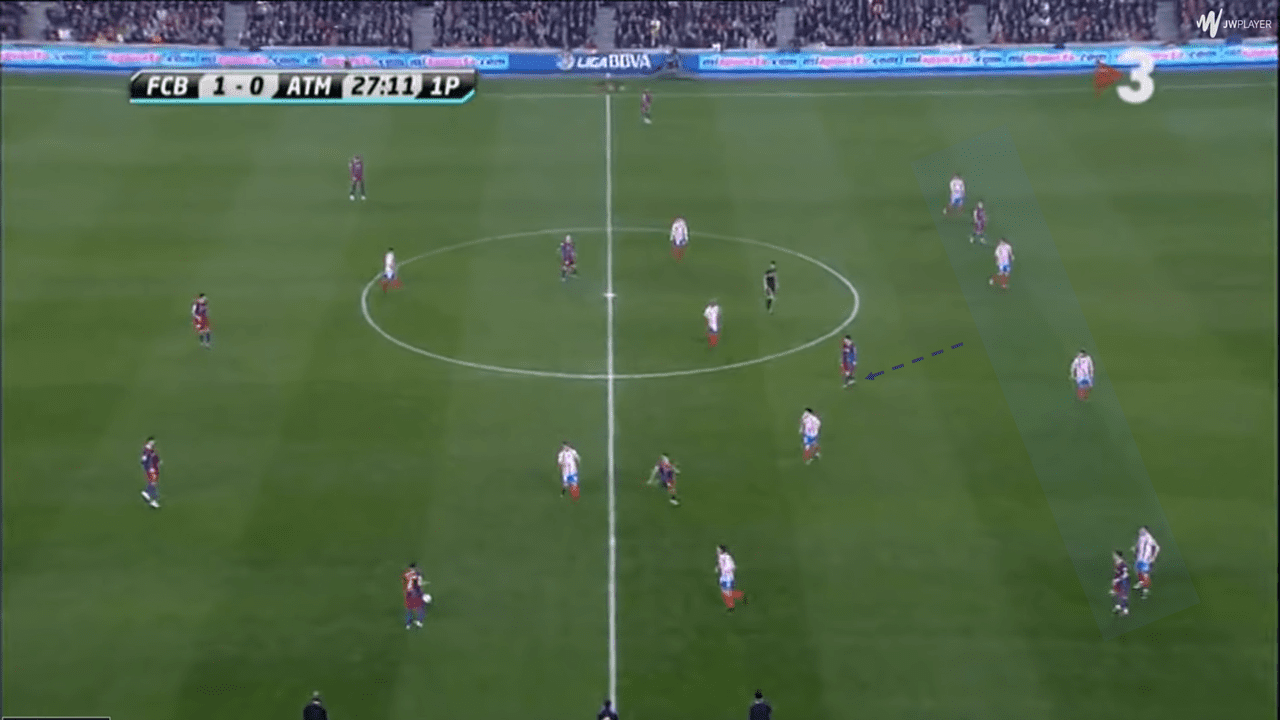
As the desire is to isolate the opponent’s backline and deny them from supporting and covering their teammates, the opposition manager would seek to minimise the distances between the backline and the midfield vertically to make this difficult.
Furthermore, To gain fluidity players need to execute some principles like diagonality. It is understood that the horizontal pass allows switching the point of attack but does not lead directly to a progression higher. The vertical pass leads to an advance on offence, but no change of direction. Here arrives the diagonality. A diagonal pass fundamentally combines the advantages of both previous types (progression & changing direction). It is difficult to defend and requires a more complicated movement from the opponents which usually leads to advantages like dynamic and numerical advantages and is very important to create triangles and diamonds.
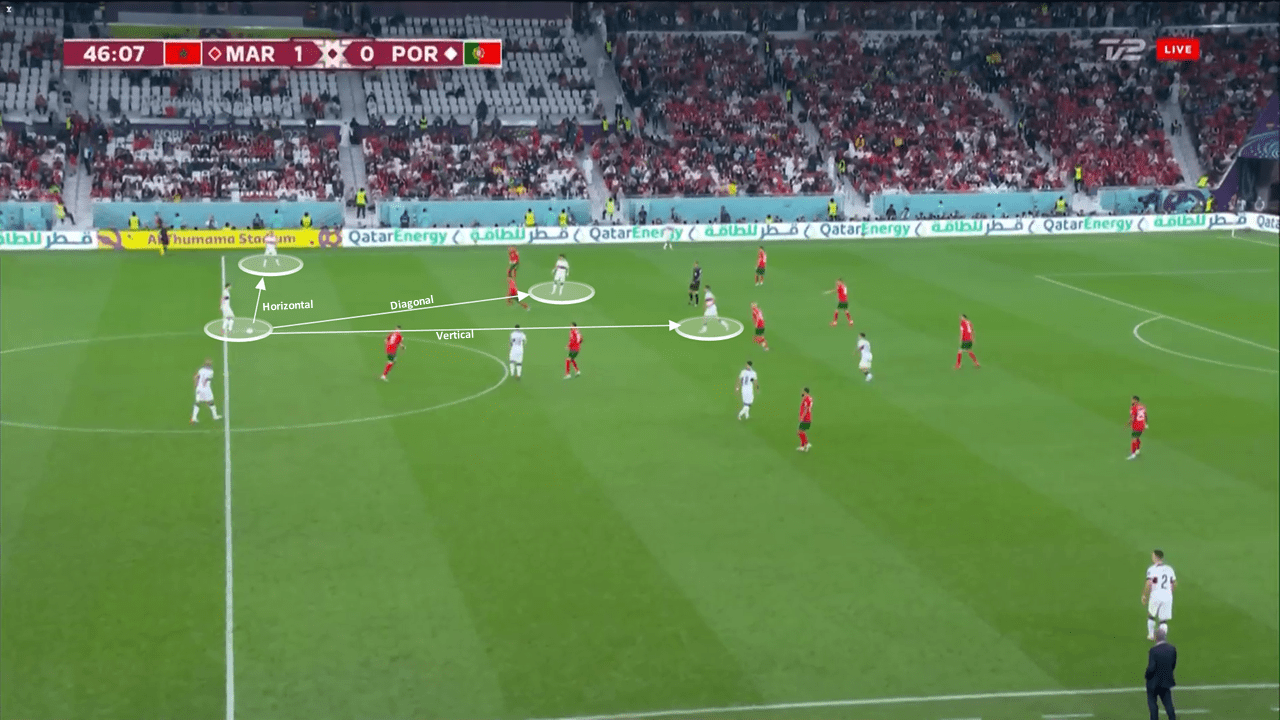
Breaking through a 4-5-1
The critical element in the 4-5-1 defensive structure is having an extra midfielder who can do more additional functions helping both other lines. this presence of an extra player in the opposition’s second line with the probable absence of players in midfield, to pin the backline or build the attack, will be impacting and these wide #8s usually seem to jump to support the block’s first line whilst covering the channel’s shadow and often the striker is focused on man-marking the defensive midfielder.
Thus, it will be needed to create superiority over two players with at least three players to build up.
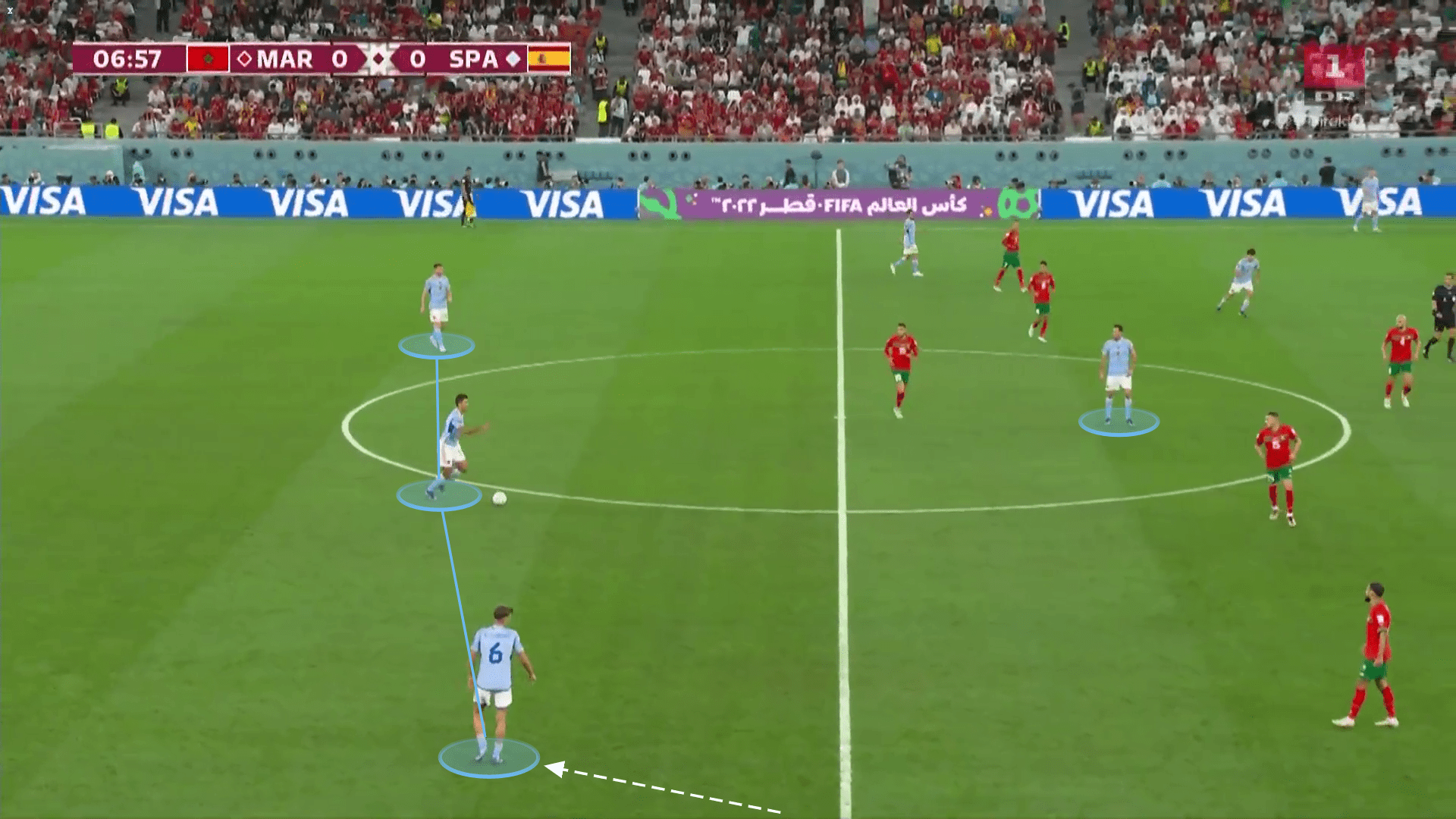 Build with a 3-1 base rather than a 4-1 or 2-1
Build with a 3-1 base rather than a 4-1 or 2-1
The build-up approach will be more efficient if the defensive midfielder is more dynamic to overcome the shadow of the striker. Furthermore, a teammate can drop deeper creating a numerical advantage which drags his marker away (type of pinning).
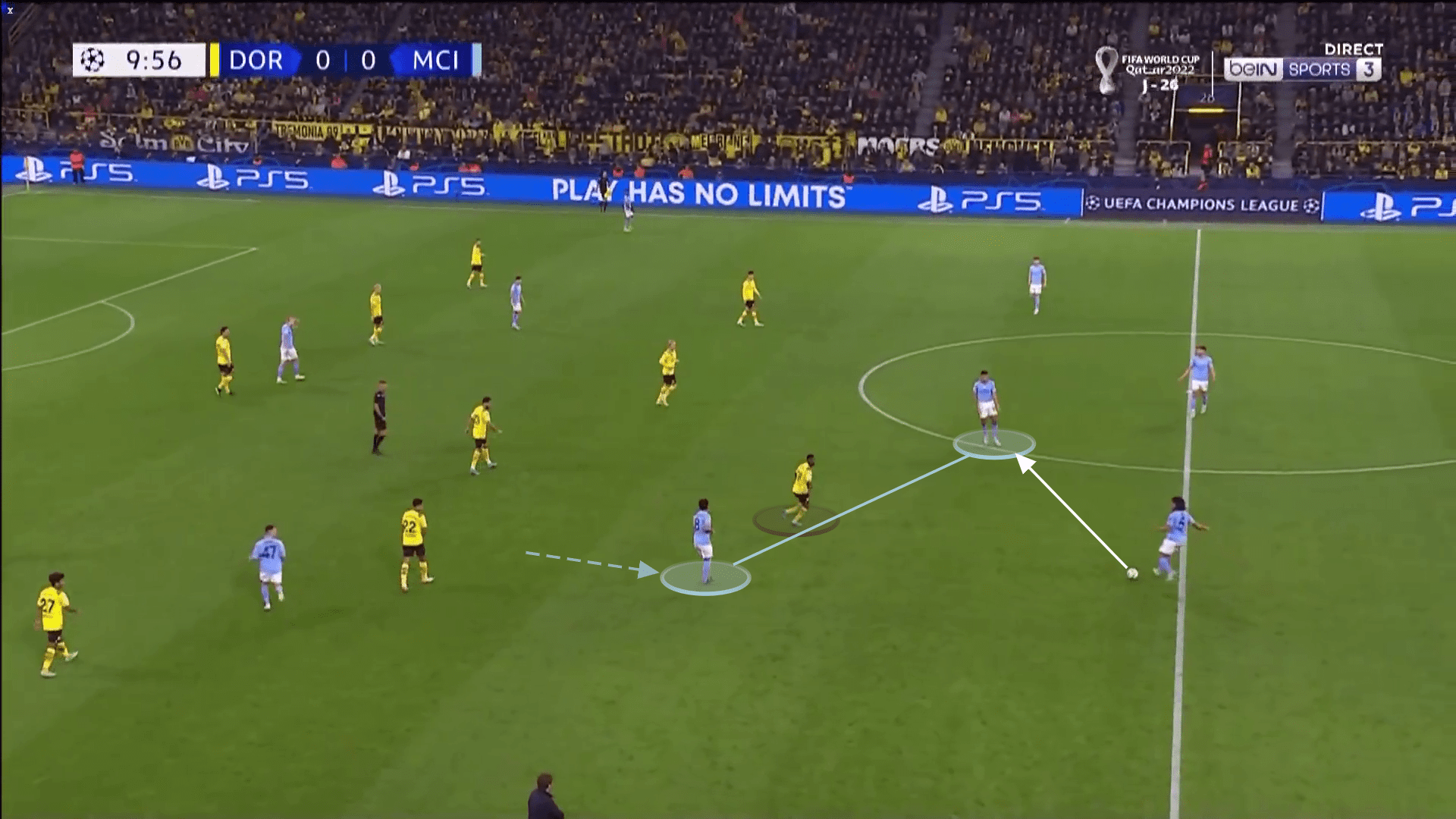 3-2 base
3-2 base
As mentioned before, the privilege of progressing by a 3-1 or 3-2 bases and then pushing 4 or 3 between the lines also supports pinning the central line and provokes the backline to step forward to interact, and then spaces in behind are produced. Multiple players could settle a #10 position with dynamic movements. Their presence pins the opponent’s defensive midfielder and makes it more difficult to cover his teammates.
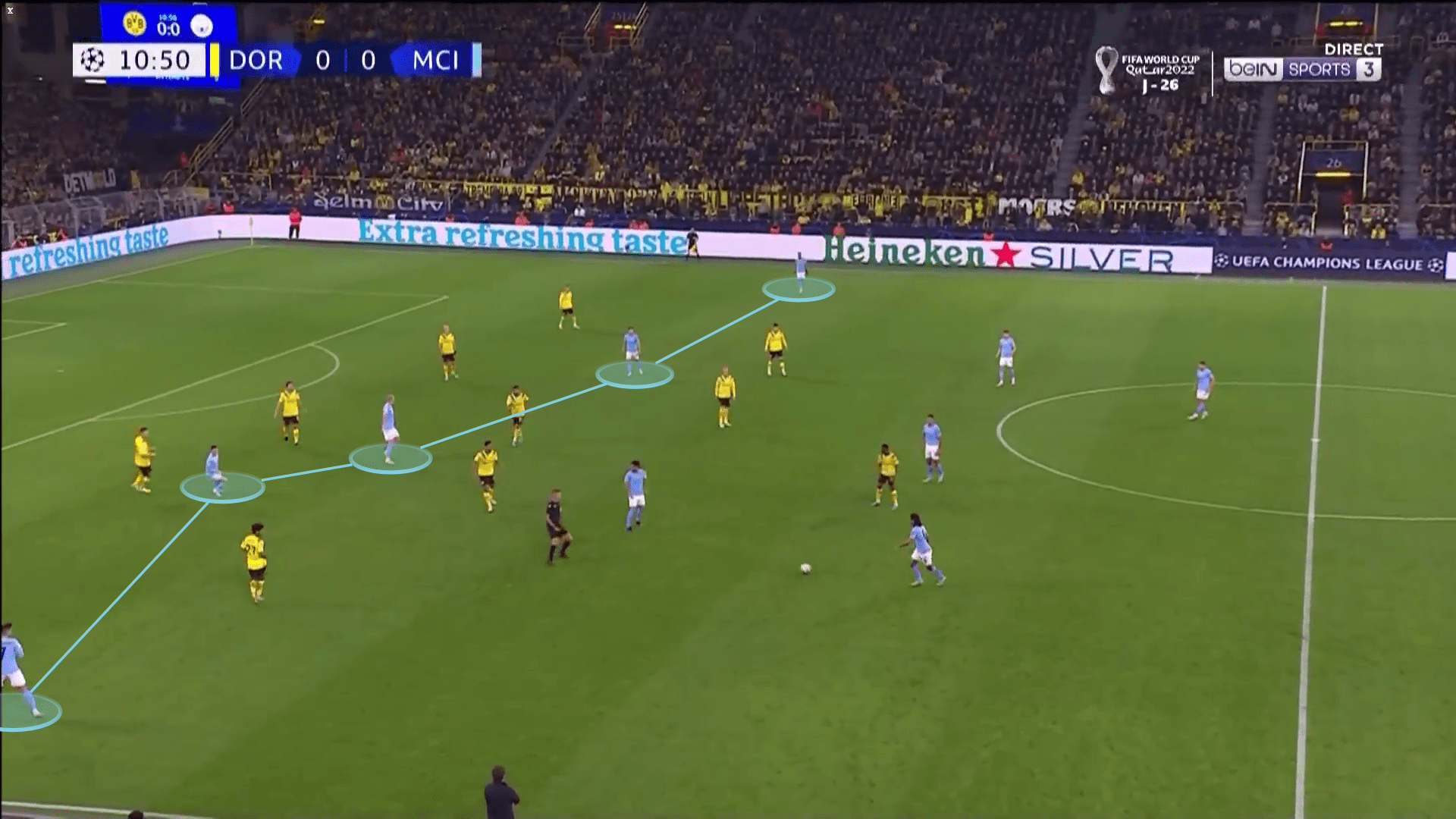
Suppose a striker, two players occupying the half-spaces, and two wide players pin the backline and #6, when one of the defenders leaves to cover their teammates, a big space is produced to exploit with superiorities.
Now after breaking the first line, the opponent’s near winger will deny possible passing lanes to the wide player, the near opponent’s #8 would cover centrally and the fullback can both press the #10 (Advanced #8 or inside winger) or the wide player (winger or overlapping FB). Hence, the team will need some tricks to penetrate.
Use dynamic wide triangles
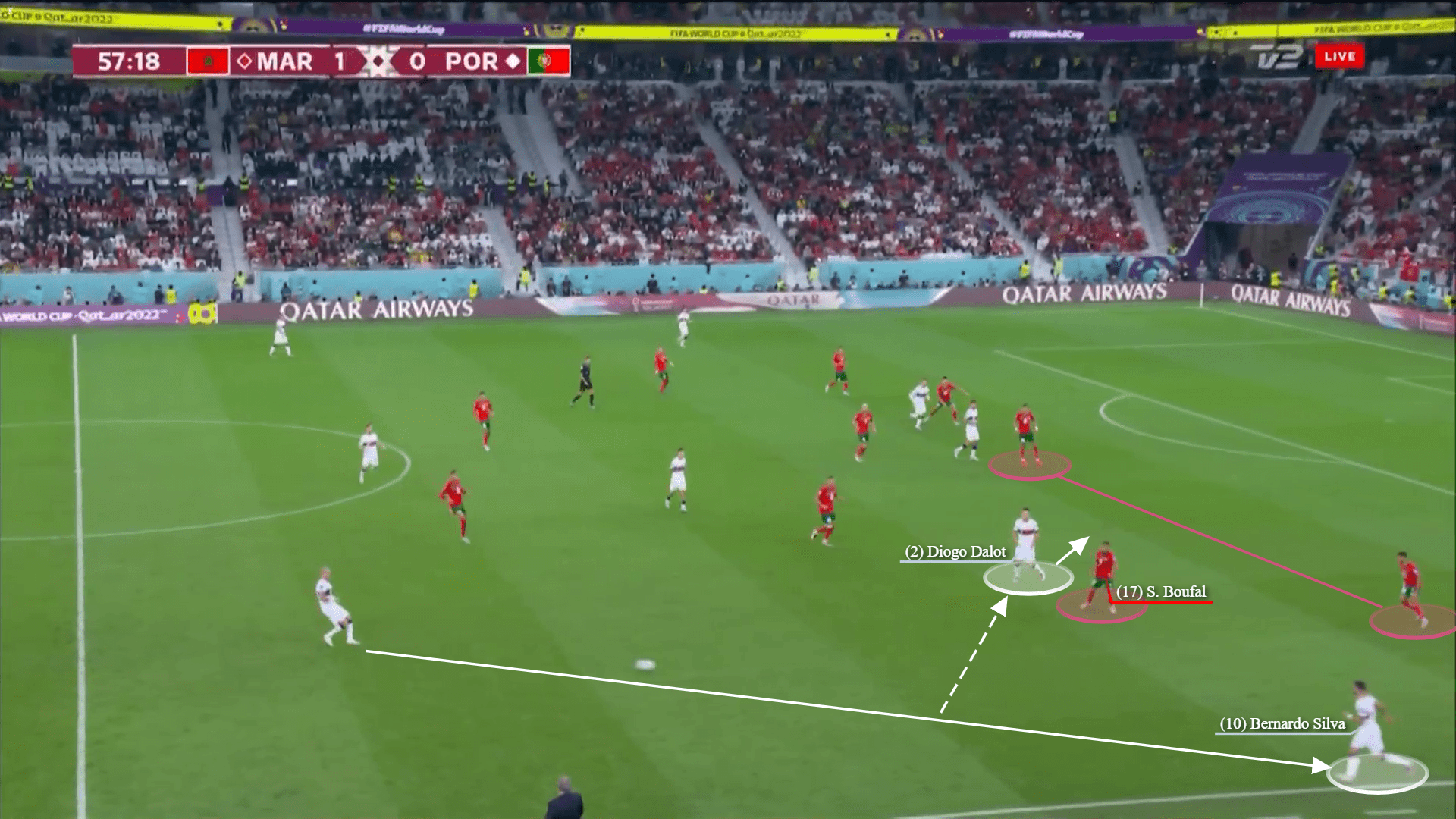
Above, the RB moves inside manipulating the opponent winger which opened a passing lane to the wide player whilst two players pinned the centre-backs centrally. Accordingly, the team can implement a third-man combination exploiting the space (between FB and CB).
The usage of the interior corridors can be of different types. Below, the centre-back had been provoked to mark the dropping striker then the #8 recognised the space there whilst the FB (out of the scene) was busy with the wide player.
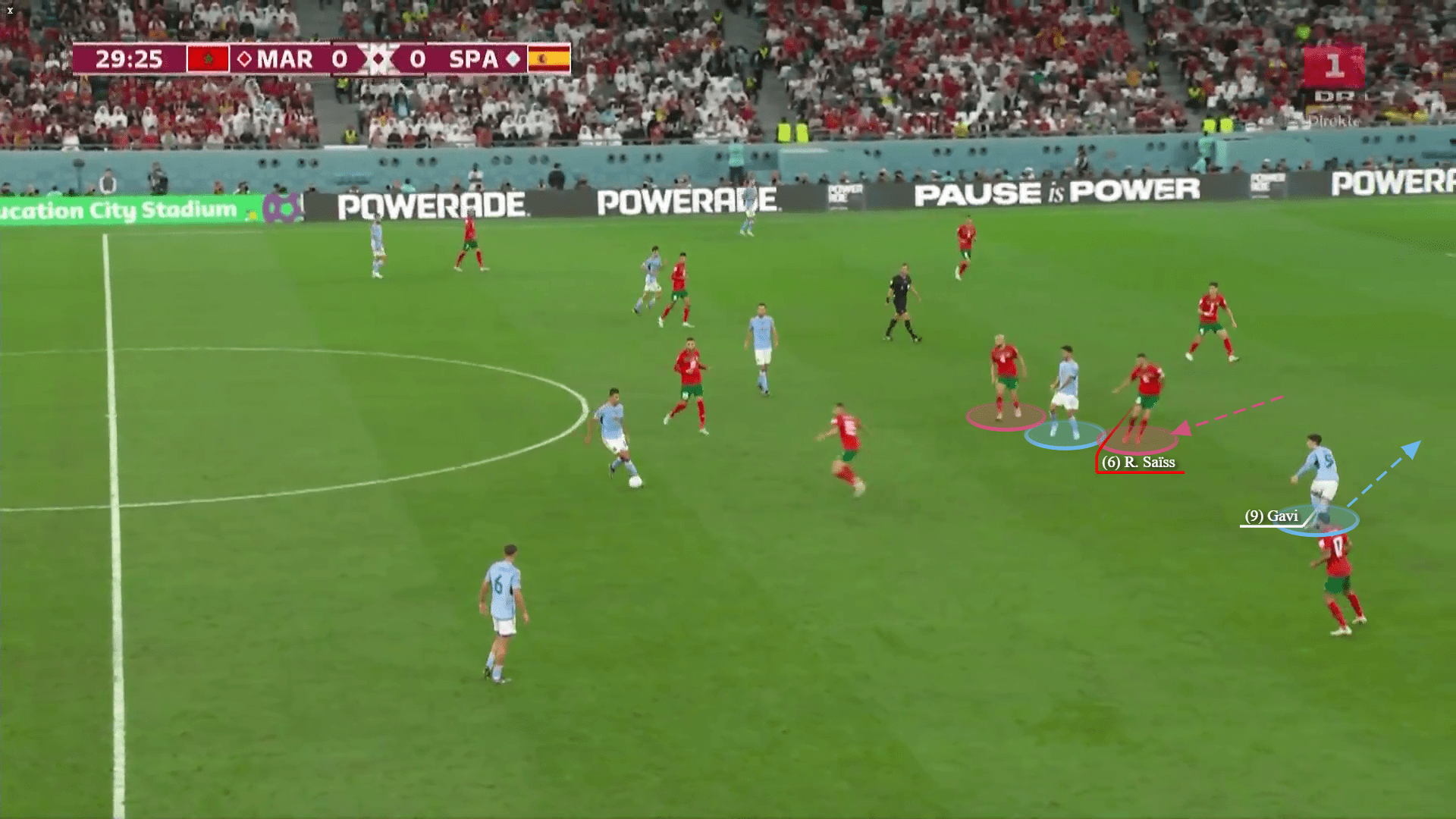
Isolating the winger vs the opponent’s FB in space is a qualitative superiority that the positional attack seeks. Hence, playing these forward passes behind the fullback, whilst his attention may be taken to the inside player, could put him in dilemma and into a lose-lose situation.
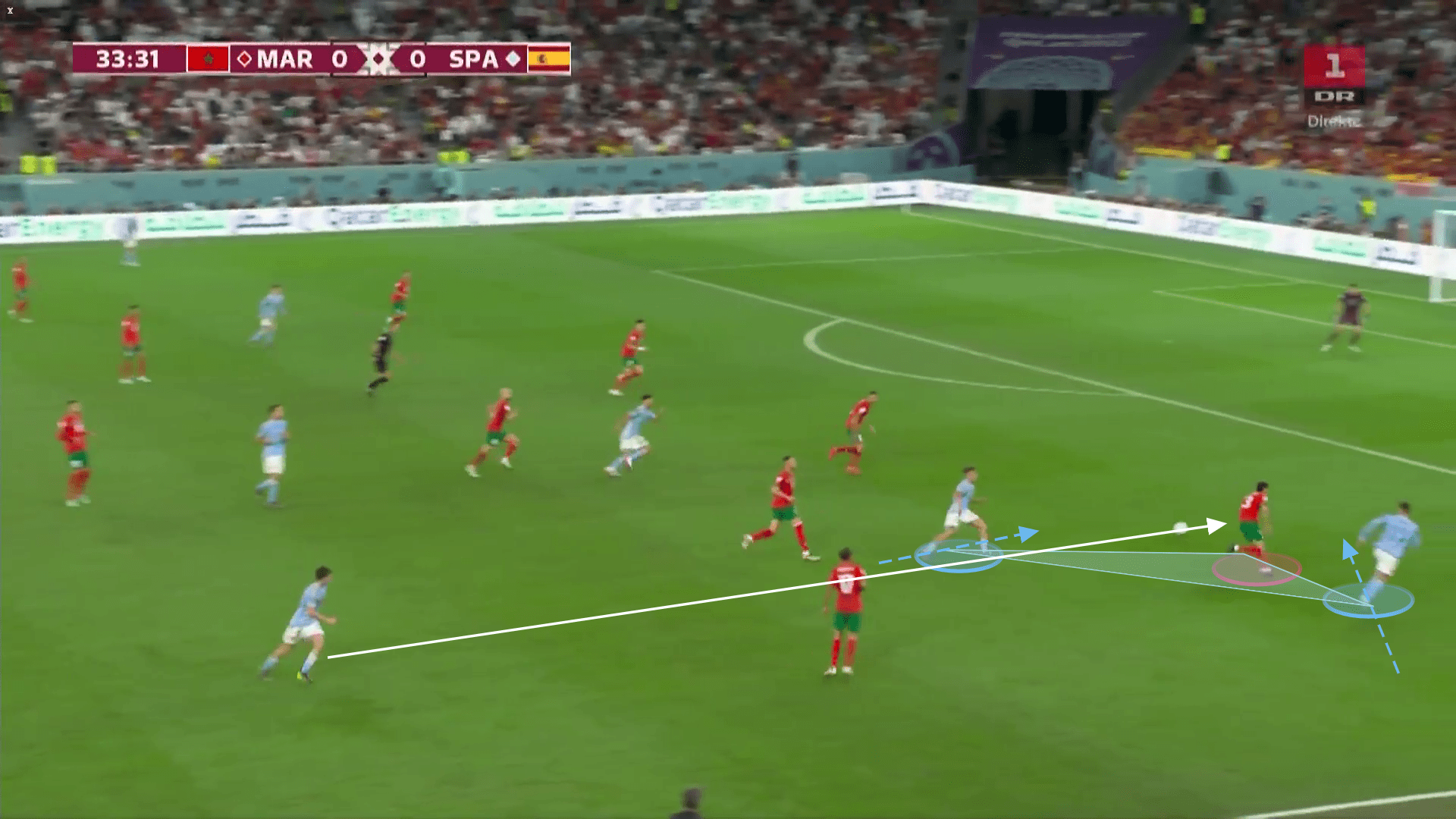
Overloading the ball side to isolate the far wide player, then playing a diagonal longball across the whole block using the same previous approach whilst a player moves inside to drag the opponent FB that gives the target wide player time and space, also gives room for qualitative and numerical advantages.
Commonly, fast switching is vital to penetrate the defensive blocks.
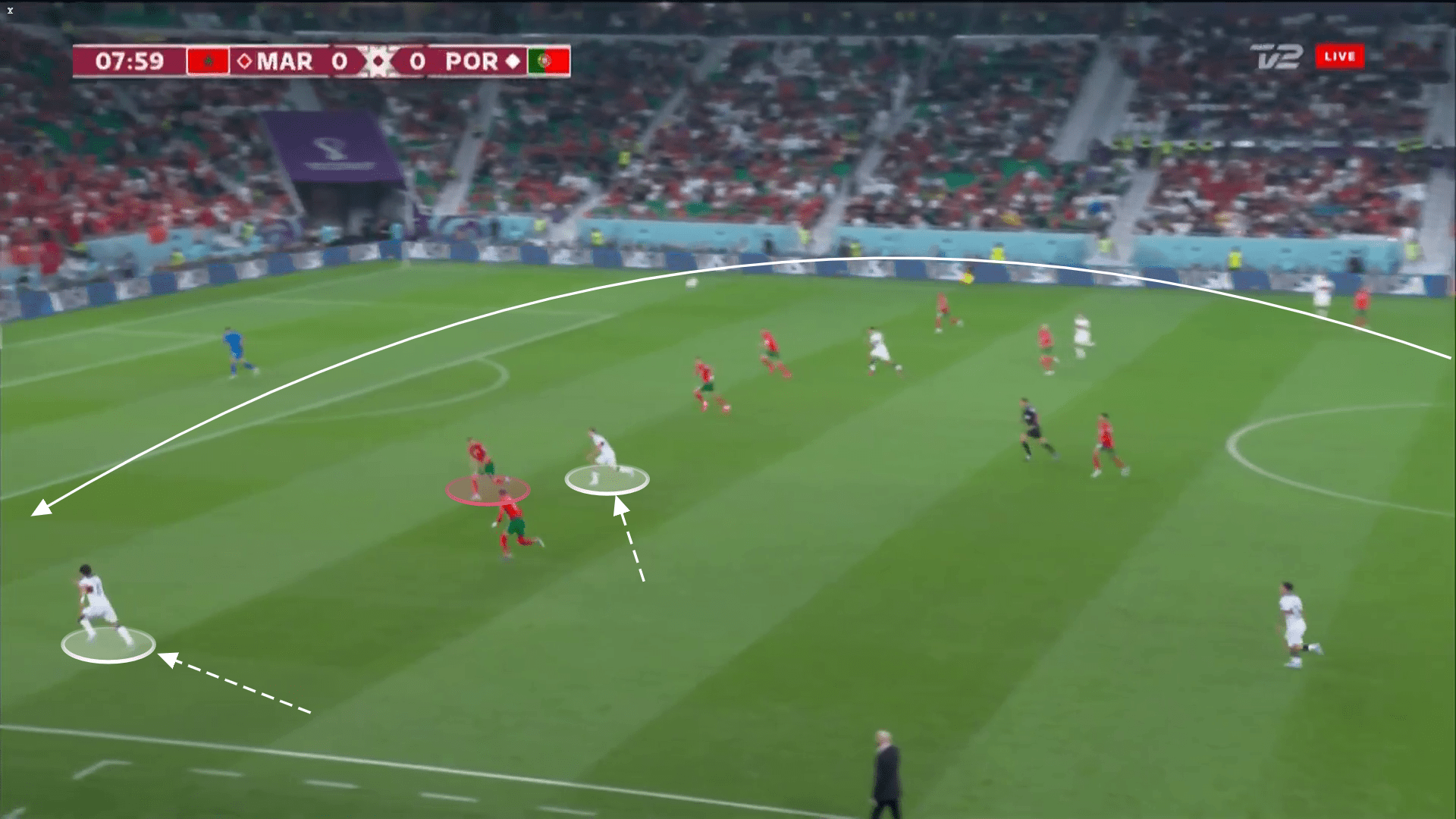
Yet, this approach of penetrating above the block can be continued by the striker who positions himself between the defenders, and then attacks the space behind through fake off-dropping or manipulating the two centre-backs.
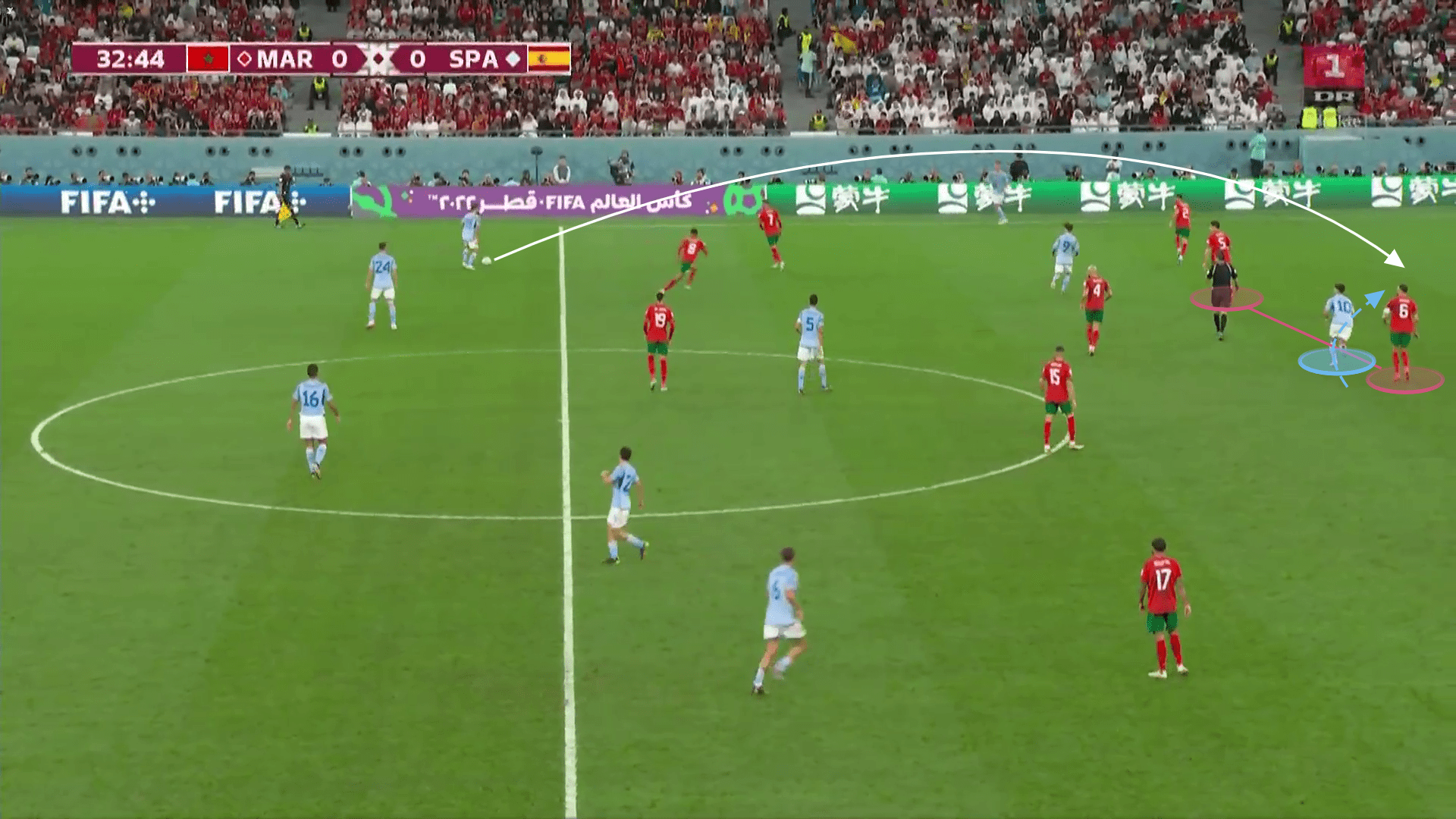
Moreover, for more advanced execution for this idea to move higher of the block, the possession team could use pressing triggers to provoke the opponent’s players to move higher up of the pitch and then deliver the ball in behind.
Yet, there are other techniques to apply to break the teams that utilise the 4-5-1 deep block like concentrating on set pieces, shooting from range, attempting to play forward when possible then trying to win second balls, and even letting the ball for the defending team move higher. Accordingly, spaces behind will appear.
Conclusion
In this tactical analysis, we theoretically attempted to represent a series of principles and tactics to beat the deep 4-5-1 block through the positional play while holding stability for the counter-pressing of transitions. But indeed there are an endless number of possible tactics to conquer any defensive block.
Many coaches have applied flexible systems to beat the deep blocks some of which have been successful and some have failed. But the important thing is that defensive teams become more reliable day after day versus these big attacking teams that always develop their approaches. Yet, the fun of football is this implicit competition.
Whichever process you have the intention to use, Joe Namath’s quote “When you win, nothing hurts” will always be valid. Winning is yet the most important thing in football but doing it through enjoyable defensive or attacking techniques is meaningful also.





Comments